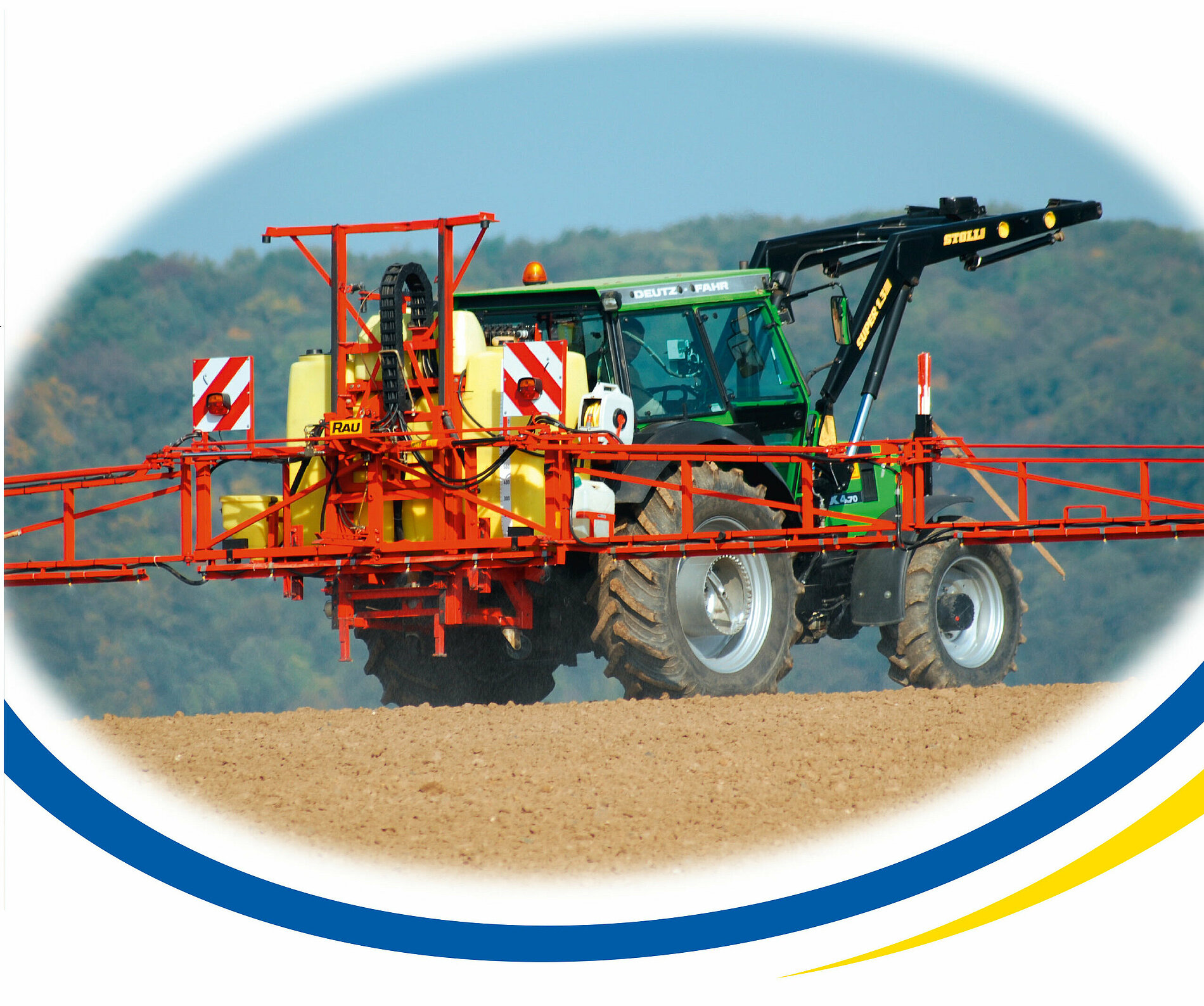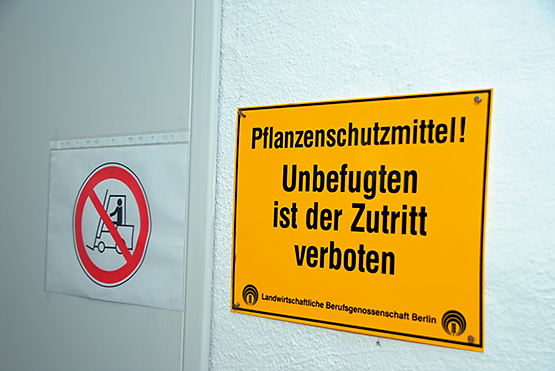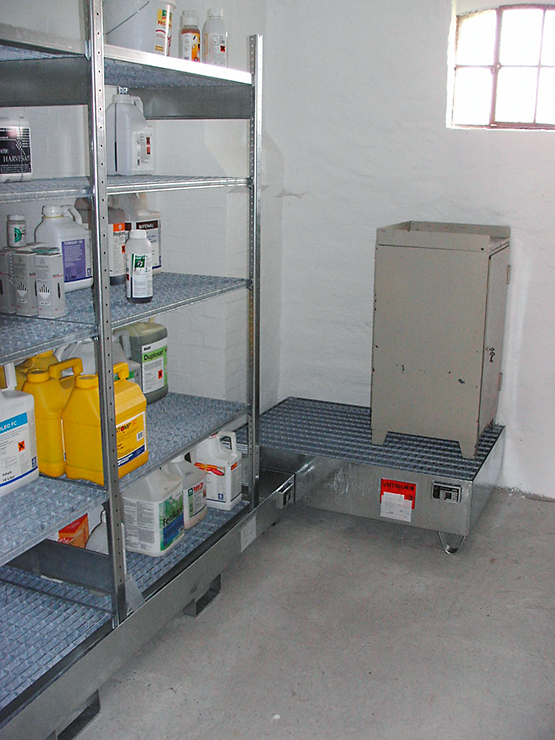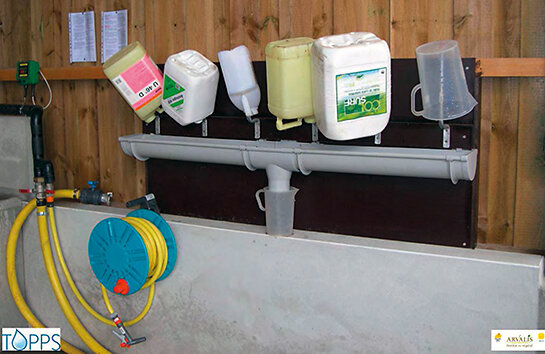Correct crop protection – things to check before you start
DLG Expert Knowledge 409
1. Foreword
Legally speaking, crop protection is one of the most strictly regulated sectors in agriculture, no matter whether it is performed on conventional or organic farms. The Good Agricultural Practices (GAP) as stated in the German Crop Protection Act (CPA) and the associated integrated crop protection measures are fundamental for all crop protection activities in Germany and, consequently, for the correct application of chemicals.
Compliance with both GAP and CPA is the only way for farmers to ensure sustainable high-quality plant production in sufficient quantities whilst avoiding risks to humans, animals and the ecosystem. Therefore, violations of the plant protection laws or the GAP are considered a regulatory offence in Germany and/or may result in a reduction of direct payments to the culpable farmer. So could be in other countries as well.
The concept of integrated crop protection has become the key strategy for practical crop protection on a global scale. This means that growers need to pursue a holistic approach and take preventive measures while considering chemical use as their last resort and limiting inputs to the necessary minimum. To this end, eight general guidelines were added to the existing Crop Protection Act in February 2012. As a result, integrated crop protection is no longer a voluntary alternative but has instead become a mandatory requirement in Germany. In addition to direct crop protection activities, the guidelines define a vast number of indirect measures to mitigate the probability of loss and, consequently, the intensity of treatments. In short, farmers are forced to keep inputs to an absolute minimum.
For a complete description of integrated crop protection and its GAP guidelines please see the information at www.bmel.de/EN/Homepage/homepage_node.html for Germany or find respective information at your national administration. This bulletin contains a short and easy-to-use check list for reviewing your chemical usage in the field. Some of the points covered in this bulletin refer to general information about crop protection (e. g. user competency, technical equipment checks, product procurement, correct chemical storage). Others deal with more traditional methods (e. g. preventive crop protection measures) which are key to applying chemicals in line with the integrated crop protection guidelines in the field.
2. Check list
The following check list is divided into five main sections with their relevant sub-sections. They describe what is necessary to ensure your crop protection activities are performed in line with legislation and with the concept of integrated crop protection. For reasons of clarity, each aspect is summed up in a brief explanation without going into details. Please note that, while this check list may contain fundamental information, it is by no means exhaustive.
I. Correct use of chemicals
I.1 User competency
According to the German Crop Protection Act, any person handling crop chemicals on a farm must be authorized to do so, which requires a German standard Certificate of Competency in printed form. Trainees or apprentices working under the supervision of an authorized person are exempt from this rule (see German Crop Protection Act as of 06 Februar 2012 (BGBl I, p 148)).
I.2 Training and education
Due to the dynamic development of the aspects of crop protection (new pest regulation strategies, state-of-the-art spraying equipment, development of crop or pest resistances, implementation of new legal standards) users are obliged to frequently update their skills and knowledge. To ensure true competency, German legislation demands at least one mandatory training course in three years. Even those guiding or supervising non-authorized people or working as crop protection consultants need to periodically brush up their knowledge. Service providers all over Germany offer approved trainings on this subject (e. g. during DLG-Feldtage). Keep yourself up to date with information from corresponding magazines, field days or winter meetings.
I.3 Personal protective equipment
From the moment operators begin filling the spray tank, they are obliged to wear personal protective gear to avoid any unnecessary contact with the chemicals. As a rule of thumb, operators should wear standard protective overalls, sturdy footwear (such as rubber boots) and multi-purpose protective gloves when handling chemicals. Before working with chemicals make sure to read the user protection guidelines in the product’s user instructions.
I.4 Purchasing chemicals
Although stocking up large quantities of chemicals may seem an economical approach, it does not necessarily support the objectives of integrated crop protection. Ideally, chemicals should be purchased only when required and quantities should be adjusted to the actual level of infestation. In Germany, operators are required to use chemicals with national approval. Parallel imports may be used when approved as equivalent products and supplied with user instructions in German. Importing equivalent products from neighbouring European countries for on-farm usage requires the approval of the Federal German Office of Consumer Protection and Food Safety (BVL). At the same time operators need German user instructions for the reference product. Today, crop protection chemicals (with the exception of household and garden products) may not be sold to anyone other than authorized people.
I.5 Transporting chemicals
In Germany, the transport of harmful products on public roads is subject to a multitude of regulations. These regulations are stipulated in the applicable versions of the ADR (European agreement concerning the international carriage of dangerous goods by road), GGVSE (road and railway dangerous goods regulations), RSE (guidelines for GGVSE implementation) and GGAV (dangerous goods exemption regulations).
For farmers, road transport of chemicals is often limited to moving the product from the retailer to their farm yard. During these times, and also during travel to the field, farmers are responsible for protecting the ecosystem from harmful effects, regardless of whether the chemicals are transported in their original containers or in the spray tank.
I.6 Storage
All farmers are legally required to safely store chemicals according to the applicable regulations. A secure, weather-resistant storage area and proper on-farm storage management are fundamental requirements to ensure the chemicals do not pose a threat to humans or the environment, even when stored in large quantities (DLG Expert Knowledge Series 352: Storing crop protection chemicals; in German language only). Farmers may use a stock list to keep track of their inventory as required by law. This is also useful for inventory maintenance as storage quantities and chemical properties (e. g. water hazard, flammability, toxicity) govern the constructional demands on the storage area.
Figures 1 – 4:
Figures 1 to 4: The storage area should be securely locked. The chemicals inside should be stored dry and neatly arranged (© from left to right 1: Landpixel, 2 – 4: Garrelts)
Key aspects for storage:
- Always lock the storage area and never use the same room for any products other than crop protection chemicals.
- Permanently lock away any toxic and highly-toxic (T or T+) products.
- Keep the storage area clean and tidy at all times.
- Use a stock list to keep track of the chemical inventory.
- Follow the instructions on the safety data sheet.
- Keep the chemicals in a dry place.
- Periodically check the containers for leaks and ensure previously opened containers are securely capped.
Figure 5: Sample stock list (© LWK Niedersachsen)
| Pos. | Description | Hazard symbol | Water hazard class (if known) | On-farm quantity (kg or l) | Chemical or hazardous substance application area |
|---|---|---|---|---|---|
| 1 | |||||
| 2 | |||||
| 3 | |||||
| 4 | |||||
| 5 | |||||
| Date/Signature |
I.7 Chemical container disposal
Empty chemical containers should be rinsed clean or cleaned using the sprayer’s pressure system. Keep empty containers away from unauthorized personnel and do not re-use them. For Germany, take your empty containers to PAMIRA IVA (www.pamira.de), a specialized recycle program, or alternatively treat them as residual waste. Chemical residues and prohibited chemicals (toxic waste) should be taken to a proper disposal point. Make sure to retain the relevant disposal reports for future reference.
II. Spraying equipment certification
II.1 New spraying equipment
Unlike in the past, new equipment no longer requires approval by the German Federal Research Institute for Cultivated Plants, JKI (Julius Kühn Institute, Germany). All you need today is the manufacturer’s CE label (European Conformity) and the equipment-related declaration of conformity in which the manufacturer states that its product complies with the legal requirements of the European health, safety and environmental protection legislation. The JKI offers voluntary equipment inspections to ensure correctness of all documentation, sometimes including a visual check. Each approved piece of equipment is added to a public list. Eventually, ensure that new equipment is technically up to date and goes in line with your national legislation.
II.2 Inspecting used sprayers
Inspections are a mandatory requirement for all sprayers used in at least German agriculture. Periodic three-year sprayer inspections ensure precise application of chemicals at the exact target rate and make an important contribution to environmental protection. Farmers and gardeners who disregard these mandatory inspections face significant fines and possibly curtailed premium payments.
II.3 Filling and cleaning the sprayer
When filling your sprayer, always have the filling process monitored by authorized personnel.
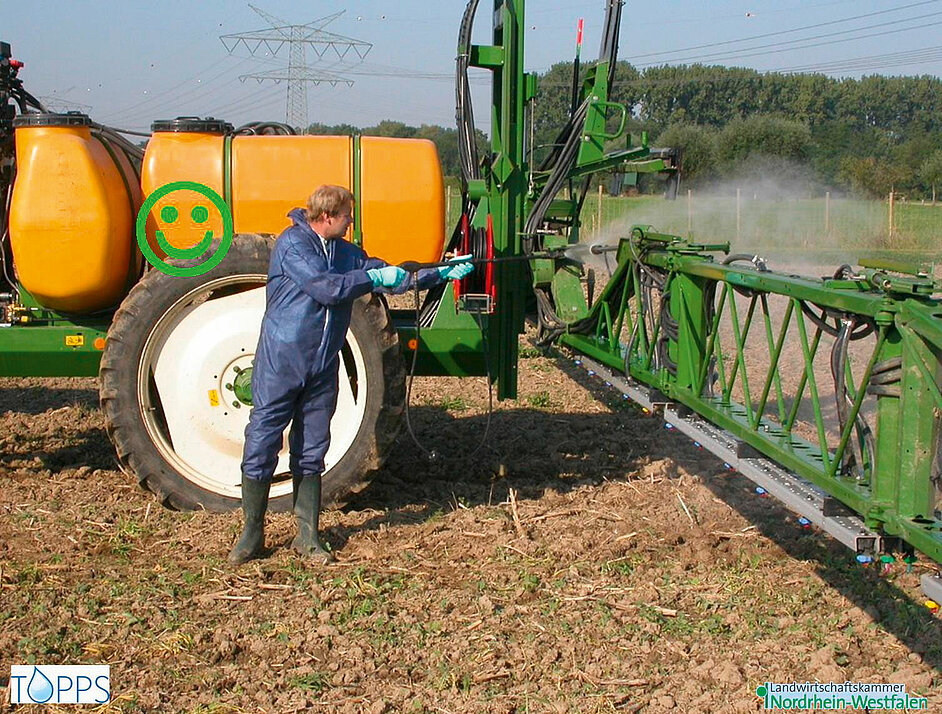
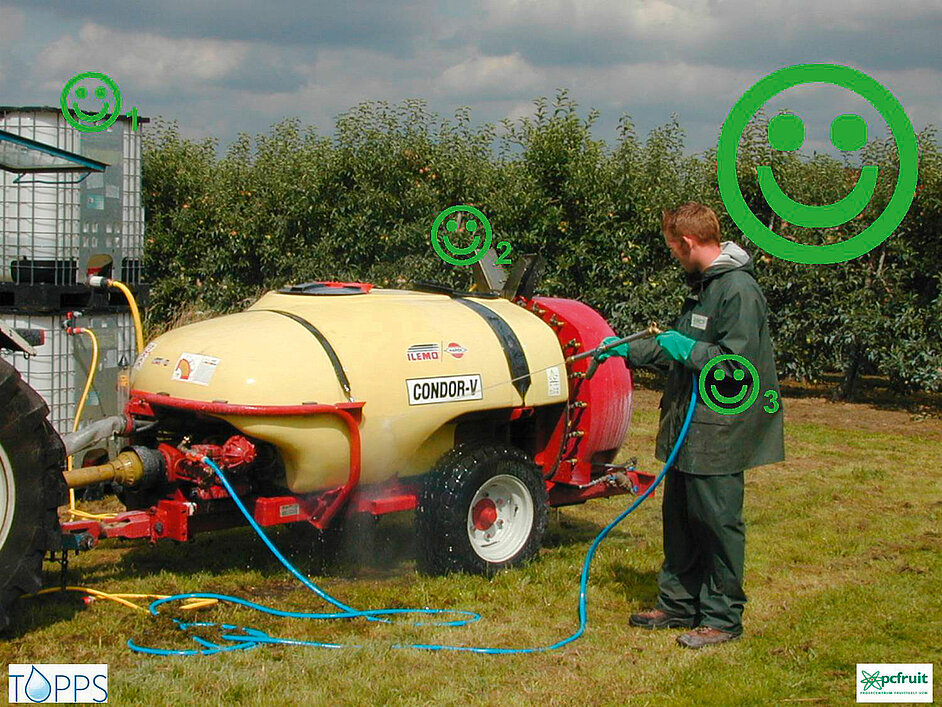
Figures 11 to 12: Correct rinsing procedures prevent point pollution. Spraying equipment should be cleaned while parked in the treated, vegetated field. This ensures more than 90% of chemical residues present in the sprayer are retained within the application area (© from left to right 11: Topps, 12: Topps and Landwirtschaftskammer NRW)
When cleaning sprayers, never allow chemical residues to enter surface waters by flowing over paved yards or into sewage systems. The sprayer should be cleaned in the treated field directly after the application, pumping the contaminated water through the nozzles.
III. Correct use of chemicals
III.1 User instructions
Before applying crop protection chemicals, make sure to fully read and follow the user instructions associated with each product. Adjust the use of the chemical to the specific crop and the type of pest to be controlled (e.?g. septoria in winter wheat or diseases of leaves in winter grain crops). Also consider the correct application rate, waiting times between applications and the maximum number of treatments as well as the last possible date for an application. Before mixing different products, determine the mutual compatibility of the various inputs in the prescription and its suitability to the crop. In most cases, application rates will be around 200l/ha. This rate may be adjusted depending on the chemical(s) used, the treated crop, the growth stage and the prevailing weather conditions. As professionals strive to achieve uniform transversal and longitudinal distribution levels and a low-drift application, the GAP guidelines suggest a ground speed of 8km/h. While many farmers wish to increase their ground speed during application it should be noted that higher speeds will negatively – and disproportionally so – affect drift behavior and distribution patterns. Therefore, a general increase in ground speed requires the proper equipment such as an air-assistance system or electronic boom control. Any application requires the use of an air-flow meter to measure the wind velocity or observing relevant charts. Fields should not be treated at wind speeds above 5m/s. In certain scenarios it may be useful to allow for an edge-of-field buffer strip – possibly in combination with additional greening measures.
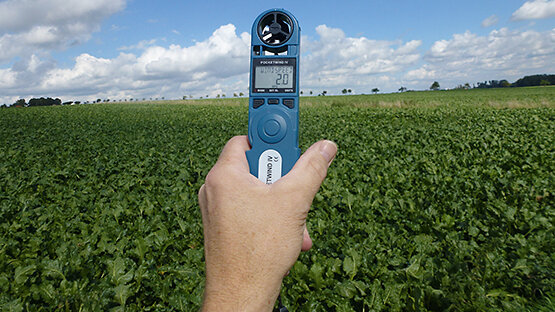
III.2 Chemical application regulations and environmental standards
Many chemicals will not fulfil the requirements for their approval unless you follow the pertinent application regulations. This is the only way to avoid negative impacts on the environment and the ecosystem. In addition, it maintains the option for farmers to use chemicals for securing high yields and sufficient crop quality levels. Rules governing the spray distance to water bodies or ecotones (rules and hazard statements for terrestrial and aquatic life on national level) are among the most important application regulation systems. They also prescribe application techniques which serve to reduce spray distances to surface waters or similar areas. It should be mentioned that the JKI offers farmers a list containing all low-drift sprayers available on the market (www.jki.bund.de).
The GAP also dictate a safe distance to sensitive areas such as private gardens, schools, nurseries and susceptible neighbouring crops. Boundary areas and farm yards are regarded as non-agricultural land and, as such, may not be treated with crop protection chemicals. The application of chemicals or even weed killers outside of agricultural, horticultural or forested areas is prohibited.
III.3 Bee protection
Consider the following aspects to avoid bee mortality:
- No chemical application within 60 metres of apiaries.
- Check the chemicals’ hazardous to bees (labelled according to national classification requirements).
- When using products classified as hazardous to bees, check whether the crop is frequented by bees (crops/weeds in bloom, crops with increased amounts of honeydew etc.).
- Avoid drift towards neighbouring crops in bloom.
- A certain mixture of chemicals may become hazardous to bees (read user instructions).
- As a precaution, even chemicals harmless to bees should not be sprayed before evening breaks and before the bees have stopped flying.
Depending on site characteristics, it may be advisable to create flower strips. In this case ensure to keep drift levels as low as possible.
IV. Minimizing application intensity
IV.1 Preventive crop protection whenever possible
- Adjust your cropping practices, crop types and crop rotations to site-specific characteristics and avoid infestation by pathogens in order to prevent harmful substances, such as mycotoxins, from forming in the field.
- Adjust your tillage methods to the specific site and current conditions to avoid pathogen infestation. At the same time, make sure your strategy protects the topsoil from erosion.
- Prefer varieties and crops whose backgrounds suggest tolerance or resistance towards key site-specific pathogens. Regional cultivation recommendations can be a valuable source of information on this subject.
- Good field hygiene avoids carrying over pests.
- Time all drilling and planting to a schedule that does not promote infestation of the future crop.
- All cultivation and spraying should suit the individual field conditions.
- Fertilizer is to be applied to actual requirements and at a rate that provides the crop with a balanced supply of nutrients without promoting pathogen infestation.
The authors of this bulletin are aware that the above statements on preventive crop protection are of a rather general nature. However, since the mutual ramifications and effects of the measures described are fairly complex, any specific information related to crop or pest types would go beyond the scope of this bulletin.
IV.2 Minimizing inputs
Farmers should apply crop protection chemicals that are approved for the relevant area of application only in those cases where no other practicable pest control is an option. The cost for the chemical inputs should never exceed the profits expected or losses prevented. Depending on the product’s required duration of action, rates must adjusted to the pest spectrum and reduced as necessary. This said, bear in mind that low application rates may involve the risk of resistances with respect to pest and agent.
Avoid preventive use of chemicals.
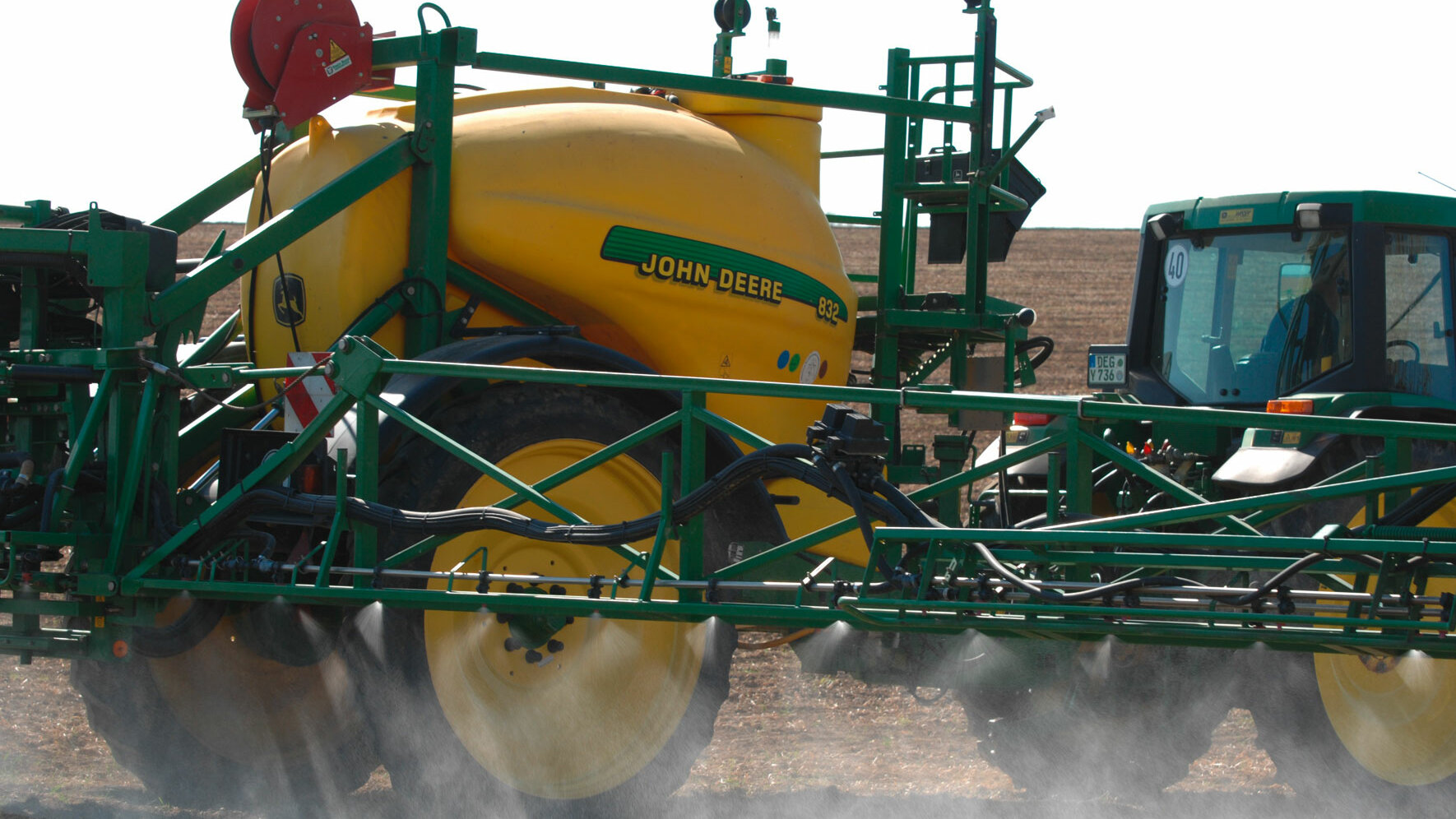
IV.3 Consultation and forecasting
Call in your consultation and forecast services of choice. Observe the infestation developments and adjust your product rates to the relevant level of infestation. When evaluating the necessity of infestation control measures, draw on your own experience in previous years and consider the recommendations made by your crop protection service provider.
V. Documentation of chemical use
V.1 Mandatory documentation
Always log the following key information:
- User name
- Treated field
- Application date
- Product description
- Application rate
- Crop
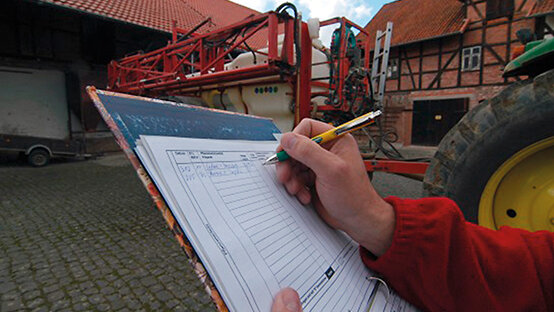
V.2 Recommended documentation
- Pest or disease to be controlled
- Level or frequency of infestation at the time of treatment
- Assessment of chemical effects (excellent, average, not as expected)
- Weather conditions and spraying equipment used during the application. To be able to dismiss unfounded claims when facing problems with neighbours’ plots or official inspections, you should have accurate key information available, such as nozzle type, application rate, ground speed, wind velocity and temperature.
V.3 Non-treated (control) areas
Create untreated control areas so as to verify the efficacy of your pest control or to monitor pest developments within a single field.
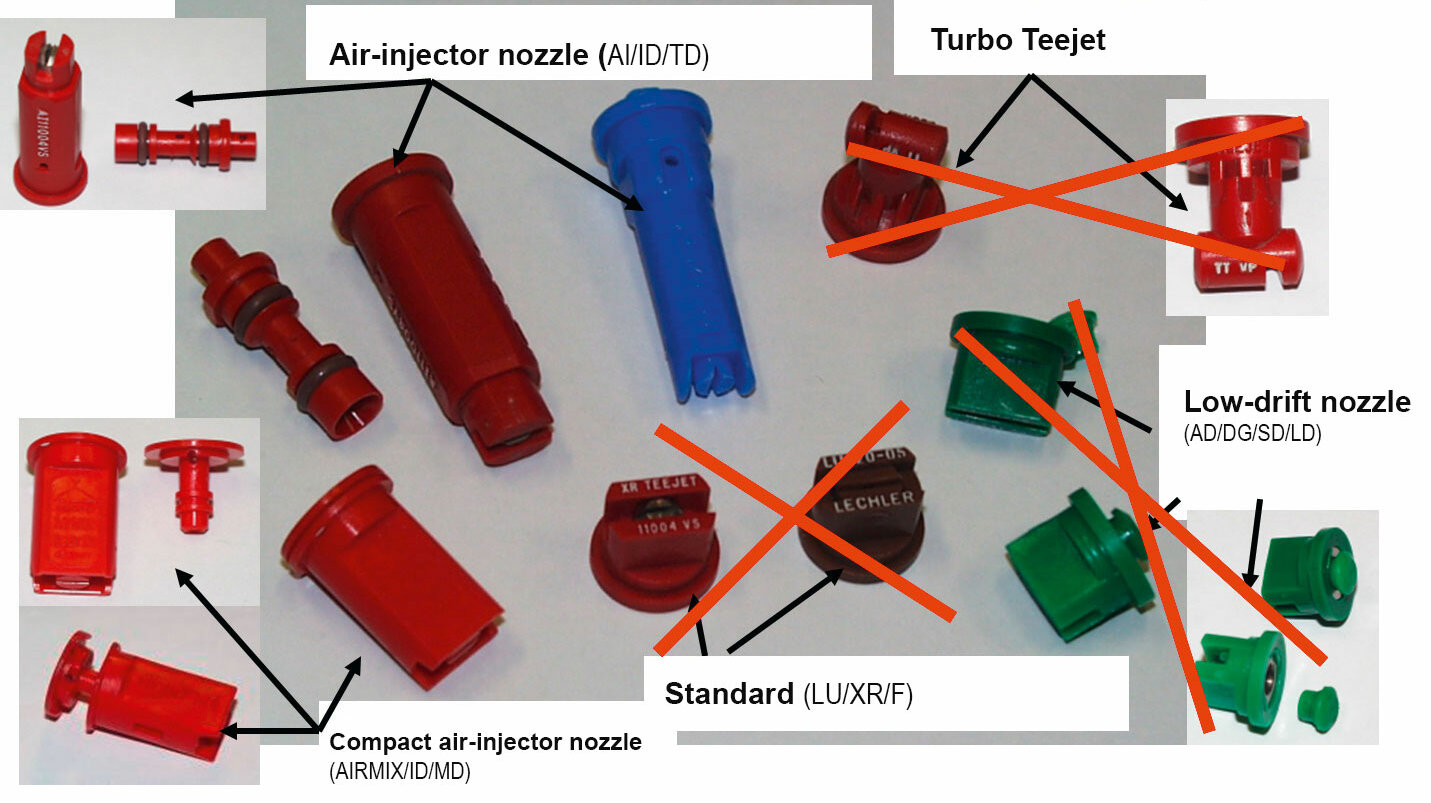
3. Personal check list overview
| Use this check list to keep track of your integrated crop protection efforts | Com- pleted | Pend- ing | Comments | |
|---|---|---|---|---|
| I. | Correct use of chemicals | |||
| 1 | User competency | |||
| 2 | Training and education | |||
| 3 | Personal protective equipment | |||
| 4 | Purchasing chemicals | |||
| 5 | Transporting chemicals | |||
| 6 | Storage | |||
| 7 | Chemical container disposal | |||
| II. | Spraying equipment certification | |||
| 1 | Purchasing new equipment | |||
| 2 | Inspecting used sprayers | |||
| 3 | Filling and cleaning the sprayer | |||
| III. | Correct use of chemicals | |||
| 1 | User instructions have been fully read and followed | |||
| 2 | Area of application has been identified (crop and pest type, e. g. mildew in oats or diseases of leaves in winter grains) | |||
| 3 | Application rate | |||
| 4 | Waiting time between applications | |||
| 5 | Maximum number of applications | |||
| 6 | Last possible date of application | |||
| 7 | Chemical compatibility and crop suitability have been checked before mixing different products | |||
| 8 | Standard minimum application rate of 200l/ha (to be adjusted to operating conditions, product and crop) | |||
| 9 | Do not exceed the following: | |||
| a) Wind velocity of 5m/s (wind velocity meter or chart available?) | ||||
| b) Ground speeds of 8km/h (adjust to operating conditions) | ||||
| 10 | Chemical application regulations and environmental standards with regard to: | |||
| a) Surface water bodies | ||||
| b) Ecotones | ||||
| c) Sensitive areas (private gardens, schools, nurseries and susceptible neighbouring crops) | ||||
| d) Compliance with bee protection regulations | ||||
| e) No use of chemicals (weed killers in particular) outside of agricultural, horticultural or forested areas | ||||
| IV | Minimizing application intensity | |||
| 1 | Make use of preventive crop protection methods whenever possible: | |||
| a) Crop rotation | ||||
| b) Ploughing | ||||
| c) Select a resistant crop | ||||
| d) Time drilling to mimimize the promotion of pests and diseases | ||||
| e) Avoiding excessive nitrogen input (promotes mildew or plant lice) | ||||
| 2 | Do not use chemicals unless required. Verify in each individual case whether an application is really necessary: | |||
| a) The cost for chemicals should not exceed the profits expected or the losses prevented. | ||||
| b) Adjust spray rates to the pest spectrum and reduce rates according to the product’s required duration of action. | ||||
| c) Avoid any preventive application of chemicals. | ||||
| d) Call in your consultation and forecast services of choice. Observe infestation developments and adjust the required product rates to the actual level of infestation. | ||||
| V | Document chemical usage and periodically create untreated control areas: | |||
| 1 | The following documentation is mandatory: | |||
| a) User name | ||||
| b) Treated area | ||||
| c) Application date | ||||
| d) Product name | ||||
| e) Application rate | ||||
| f) Crop | ||||
| 2 | It is recommended to record the following additional information: | |||
| a) Pest to be controlled | ||||
| b) Level or frequency of infestation at the time of treatment | ||||
| c) Assessment of chemical effects (excellent, average, not as expected) | ||||
| d) Weather conditions during the application and equipment used. To be able to dismiss unfounded claims when facing problems with neighbours’ plots or official inspections, you should have accurate information available, such as: | ||||
| • Nozzle type | ||||
| • Litres of water used | ||||
| • Ground speed | ||||
| • Wind velocity and temperature | ||||
| As required, take special measures in the vicinity of water bodies or ecotones. This is in proof that you are observing the regulations for the chemical product used. |
© Reproduction and transfer of individual sections of text, drawings or photos (including for the purpose of teaching) and the provision of the Expert Knowledge Series 450 in whole or in part for viewing or downloading by third parties only with the prior approval of DLG e.V., Marketing Service Department, Eschborner Landstraße 122, 60489 Frankfurt am Main, Germany, tel. +49 69 24788-209, M.Biallowons@DLG.org

